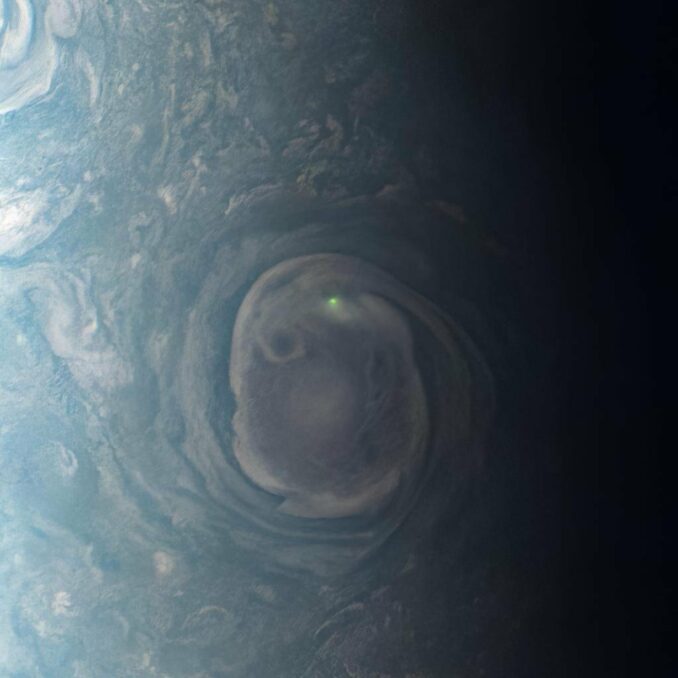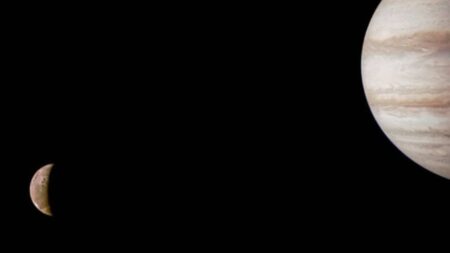In an image from juno, spacecraft of NASA, the glow of a lightning bolt near Jupiter’s north pole was observed.
Juno, a NASA space probe
Built by Lockheed Martin, an American corporation with world wide interests and operated by NASA’s Jet Propulsion Laboratory Juno is a space probe orbiting the planet Jupiter with the aim to understand origin and evolution of the Jupiter. It is the second spacecraft to orbit Jupiter after Galileo orbiter. The solar powered Jupiter explorer was launched on August 5, 2011. It was originally planned to deorbit into atmosphere of Jupiter after completing 36 orbits of Jupiter, but has been commissioned through 2025 to do a further additional 40 orbits of Jupiter. Juno has been orbiting Jupiter since 2016.

New Findings
NASA explained that as lightning bolts originates from water clouds on earth, in Jupiter lightning likely also occurs in clouds containing an ammonia water solution. The image was captured on December 20,2020 when juno completed its 31st close flyby of Jupiter. In 2022, the image was processed by citizen scientist Kevin M. Gill using the raw data from JunoCam instrunstrument aboard the spacecraft. When juno captured the image, it was about 32,000 km above Jupiter’s cloud tops, at a latitude of about 78 degrees as it approached the planet. According to scientists, data sheds light on the similarities between lightning process in Earth and Jupiter, despite the significant differences between the planets.

Differences from earth
It was observed that Jupiter’s lightning activity is clustered around the poles while on earth lightning occurs in the tropics(region surrounding the equator) dominantly. From the findings so far, it is believe that the differences is related to heat. On earth, equator receives more warmth from the sun leading to warm condition in the equatorial zone. On Jupiter, which is at five times earth’s distance from sun, also receives most warmth at planet’s equator but has a different effect leading to an atmospheric convection and in turn creating thunderous storms.
In the near future, Juno’s orbits will repeatedly take it close to Jupiter as it passes over Jupiter’s night side providing more chances to capture the firebolt.












